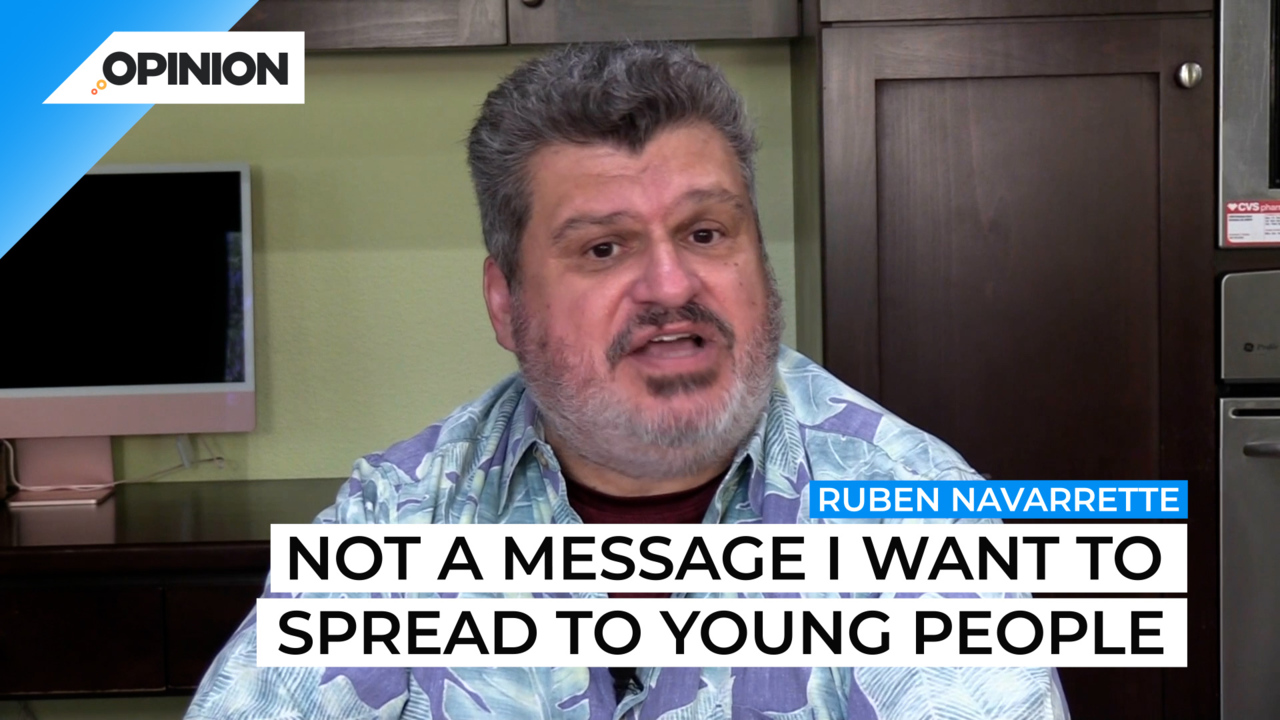
Commentary
-
Our commentary partners will help you reach your own conclusions on complex topics.
That’s it. Americans waited decades for the definitive word from the Supreme Court regarding affirmative action in college admissions. And all we got was a bunch of lousy arguments. The Supreme Court doesn’t dive into this contentious issue very often. It did so in 1978 2003 and 2016. And again October, when heard arguments by the conservative activist group students for fair admissions. They’re arguing against the admissions policies at the University of North Carolina and Harvard University. The activists want to prevent colleges from diversifying their student bodies by taking race into account admissions, along with other factors. They claim that affirmative action, a phrase coined by President John F. Kennedy in 1961, when he signed an executive order, requiring contractors who did business with the government to ensure their workforce was diverse, that this program somehow gives an unfair advantage to Latinos and African Americans, while discriminating against white and Asian American students. Look, I’ve studied affirmative action for nearly 40 years, that argument is just plain dumb. At selective schools, like Harvard standards don’t get lowered. We have more than 60,000 applicants competing for fewer than 2000 seats in the freshman class, you can have your pick of the litter. There are plenty of Latinos and African Americans to choose from world class valedictorians or student body presidents or star athletes. Besides, it’s absurd to suggest that whites and Asians are being discriminated against an admission when they represent most of the student body. But it wasn’t just the flow of arguments that bothered me. It was the fact that the six conservative members of the High Court, Roberts, Alito, Thomas Cavanaugh, Gorsuch and Barrett, all of them, by the way, received elite education at places like Harvard, Yale, Princeton, and Oxford, seem to have already made up their minds deny that opportunity to black and brown kids. No suspense here, Thomas who attend Yale Law School, and who was George HW Bush’s affirmative action pick, when the 41st president needed a black Republican to replace flexure as Thurgood Marshall made his bones and conservative legal circles in the 1980s by being a black man against affirmative action, why conservatives smile and that sort of thing you say? And Alito? Well, after graduating from Princeton and attending Yale Law School, he joined a group called concerned alumni of Princeton, the group’s sole mission seemed to be to keep their precious alma mater from getting too woke and admitting to many Latino and African American students, you know what they say? Well, there goes the neighborhood. Meanwhile, at the other end of the ideological spectrum, we find Khatami brown Jackson, the first black woman on the court and a graduate of Harvard College and Harvard Law School. Those credentials are, by the way, identical to those of Chief Justice John Roberts. Although I can assure you Kbj traveled a much bumpier road to get them. Jackson argued in favor of preserving the rights of universities to take race into account. And she mocked the idea that a college could according to the majority, look at all sorts of other factors and applicants personal background, just not race that she insisted put students of color at disadvantage, saw a bad argument, but it’s not a good one either. It suggests that black and brown students are somehow perpetually disadvantage, by virtue of something they cannot change their skin color. That’s not a message I want to spread, particularly to young people. Empowerment is all about the opposite message. If you want us fine. If not, that’s fine, too. We don’t want you either. Don’t expect us to come beg you to keep a program that may not be doing us as much good as people think. Because it masks the fact that black and brown kids are being shortchanged where it really counts the K through 12 level. Whether or not affirmative action survives much longer, life will go on and Latinos and African Americans will need to press ahead and make it on their own. Same as always
-
No one is innocent in Trump assassination attempt
After the assassination attempt on former President Donald Trump, both Democratic and Republican leaders have called for reducing divisive rhetoric. Some Republicans blame the shooting on the language Democrats used in attacking Trump. Meanwhile, some prominent Republican lawmakers, such as Rep. Elise Stefanik, R-N.Y., have used similar rhetoric, calling Biden “a clear and present threat…
-
America must fix its broken Supreme Court
The U.S. Supreme Court was envisioned by America’s founding fathers as an independent judiciary separate from the political world, designed as a fair arbiter of the law. But the 6-3 conservative majority of today’s Supreme Court has issued a number of impactful, partisan and unpopular opinions on everything from abortion access to presidential power, triggering…
-
Despite Biden’s stumble, rambling Trump can’t win debate
The first presidential debate of 2024 resulted in what many believe was a clear winner and loser. President Joe Biden’s performance was universally panned, affecting his fundraising efforts and intensifying calls for his ousting. Meanwhile, former President Donald Trump, despite being criticized for his false claims during the debate, has kept a low profile, opting…
-
Why Republicans will never shut down US-Mexico border
A group of Republican senators expressed “grave concerns” to President Biden over his recent executive order that would provide a path to citizenship to approximately 500,000 people who have been in the country for a decade or more and are also married to United States citizens. The GOP lawmakers argued that Biden’s immigration relief “directly contravenes…
-
Why Democrats’ immigration playbook not working with Latino voters
In June 2012, as President Barack Obama campaigned for reelection, he ordered immigration enforcement agents to defer action against those who had arrived in the United States as children. This executive action, known as DACA, offered a path to work permits for hundreds of thousands of undocumented immigrants. That November, Obama cruised to reelection, beating…
Latest Opinions
-
 U.S. Department of Defense
U.S. Department of Defense
Congress still trying to figure out how to reduce wasteful military spending
-
 DVIDS
DVIDS
US Navy, Air Force making waves with new weapons at RIMPAC
-
 Getty Images
Getty Images
Israeli PM Netanyahu meets with Trump at Mar-a-Lago
-
 Getty Images
Getty Images
Growing US nuclear power resurgence reaches the nation’s heartland
-
 Getty Images
Getty Images
Beer from the sun, other solar thermal projects get government funding
Popular Opinions
-
In addition to the facts, we believe it’s vital to hear perspectives from all sides of the political spectrum.


